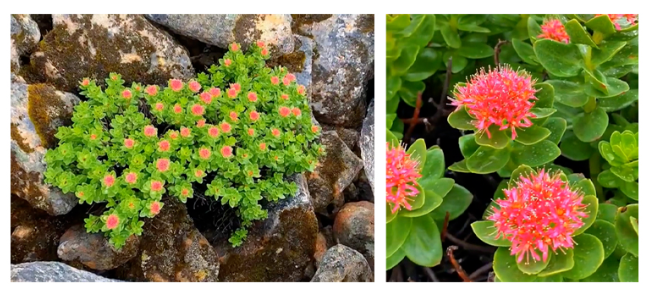- 476
- HENGLU NEWS
Salidroside (commonly known as red sage) was first recorded in the 8th century in the Tibetan medicinal text "Four Medical Classics." Subsequently, its medicinal value was detailed in "Compendium of Medical Materia Medica" during the Ming Dynasty and in the acclaimed Tibetan medicinal work "Crystal Pearl Materia Medica" during the Qing Dynasty. Over time, the medical significance of Rhodiola rosea has become increasingly prominent. In 1977, it was officially included in the "Pharmacopoeia of China," marking its formal recognition in modern medicine. The 2020 edition of the "Pharmacopoeia of China" continues to include Rhodiola rosea, which underscores its important status in the medical field.
Salidroside, one of the most physiologically active components of Rhodiola rosea, has been shown in numerous studies to possess various pharmacological effects, including antiviral activity, tissue repair following injury, brain ischemia protection, modulation of neurodegenerative diseases, cardiovascular protection, and liver protection.

Anticancer Effects
Salidroside can inhibit the growth and spread of tumor cells to some extent. Studies have shown that salidroside not only significantly suppresses the growth of transplanted pancreatic cancer in nude mice but also demonstrates a clear dose-dependent relationship [1]. By inhibiting the JAK2/STAT3 signaling pathway, salidroside can markedly reduce the proliferation and invasion of the cervical squamous carcinoma cell line C33A while promoting apoptosis [2]. These findings provide solid scientific evidence for salidroside as a potential anticancer drug.
Inhibition of Intracellular Lipid Accumulation
Excessive accumulation of intracellular lipids is one of the main causes of various metabolic diseases, such as fatty liver and atherosclerosis. Research indicates that by targeting the PI3K/AKT/GSK3-β pathway, salidroside can effectively inhibit lipid accumulation and hepatocyte apoptosis, promoting hepatocyte proliferation and thereby reducing the risk of related diseases [3].
Anti-aging Effects
Salidroside can slow down aging by enhancing endogenous antioxidant enzyme activity, scavenging oxygen free radicals, inhibiting the secretion of inflammatory factors, promoting growth hormone secretion, repairing DNA damage, and strengthening immune response and cholinergic function [4].
Antioxidant Activity
As the primary active component of Rhodiola rosea, salidroside exhibits significant antioxidant effects. Studies led by Fan Guiqiang have shown that salidroside effectively scavenges hydroxyl radicals (·OH), DPPH free radicals, and hydrogen peroxide (H2O2) to varying degrees, which helps reduce the interaction between biomolecules and free radicals, thereby effectively decreasing the risk of diseases induced by free radicals [5]. These findings further highlight the potential medical value of salidroside in preventing and treating diseases associated with oxidative stress.
Anti-inflammatory Activity
Salidroside not only demonstrates significant efficacy in antioxidation and anti-fatigue but also possesses anti-inflammatory properties. Its anti-inflammatory effects are primarily achieved by inhibiting the migration and infiltration of inflammatory cells, suppressing the production of inflammatory mediators, and regulating inflammation-related signaling pathways, which helps to reduce functional damage to the body caused by inflammatory responses [6].
Improvement of Osteoporosis
Osteoporosis is often closely related to excessive apoptosis of osteoblasts and oxidative stress. As an effective antioxidant, salidroside has the capability to counteract oxidative stress and significantly improve symptoms of osteoporosis. In in vitro studies, salidroside was shown to significantly inhibit oxidative stress in osteocytes, promote autophagy of osteocytes, and suppress apoptosis, thereby providing a protective effect on osteocytes through the inhibition of oxidative stress response [7].
References:
[1] Kou, Y. B. et al. (2019). Chinese Journal of Pancreatic Disease. 19(2): 3.
[2] Huang, J. et al. (2020). Chinese Journal of Cancer Biological Therapy. 27(05): 522-527.
[3] Cui, Z. F. et al. (2022). Poultry Science. 101.9 (2022): 102034.
[4] Ma, G. Y. et al. (2022). Gansu Science and Technology. 38(13): 120-124.
[5] Fan, G. Q. et al. (2016). Chinese Pharmacy. 27(13): 1797-1800.
[6] Zhao, B. B. et al. (2018). Translational Medicine Electronic Journal. 5(08): 55-58.
[7] Zhang, S. Y. et al. (2020). Chinese Journal of Clinical Pharmacology. 36(22): 3624-3629.



